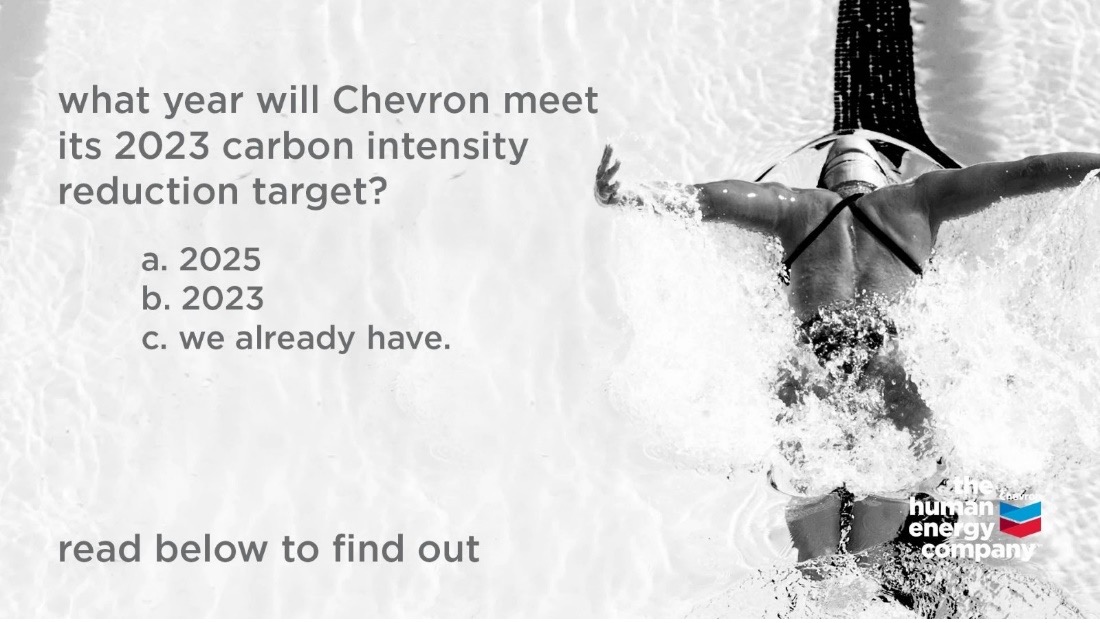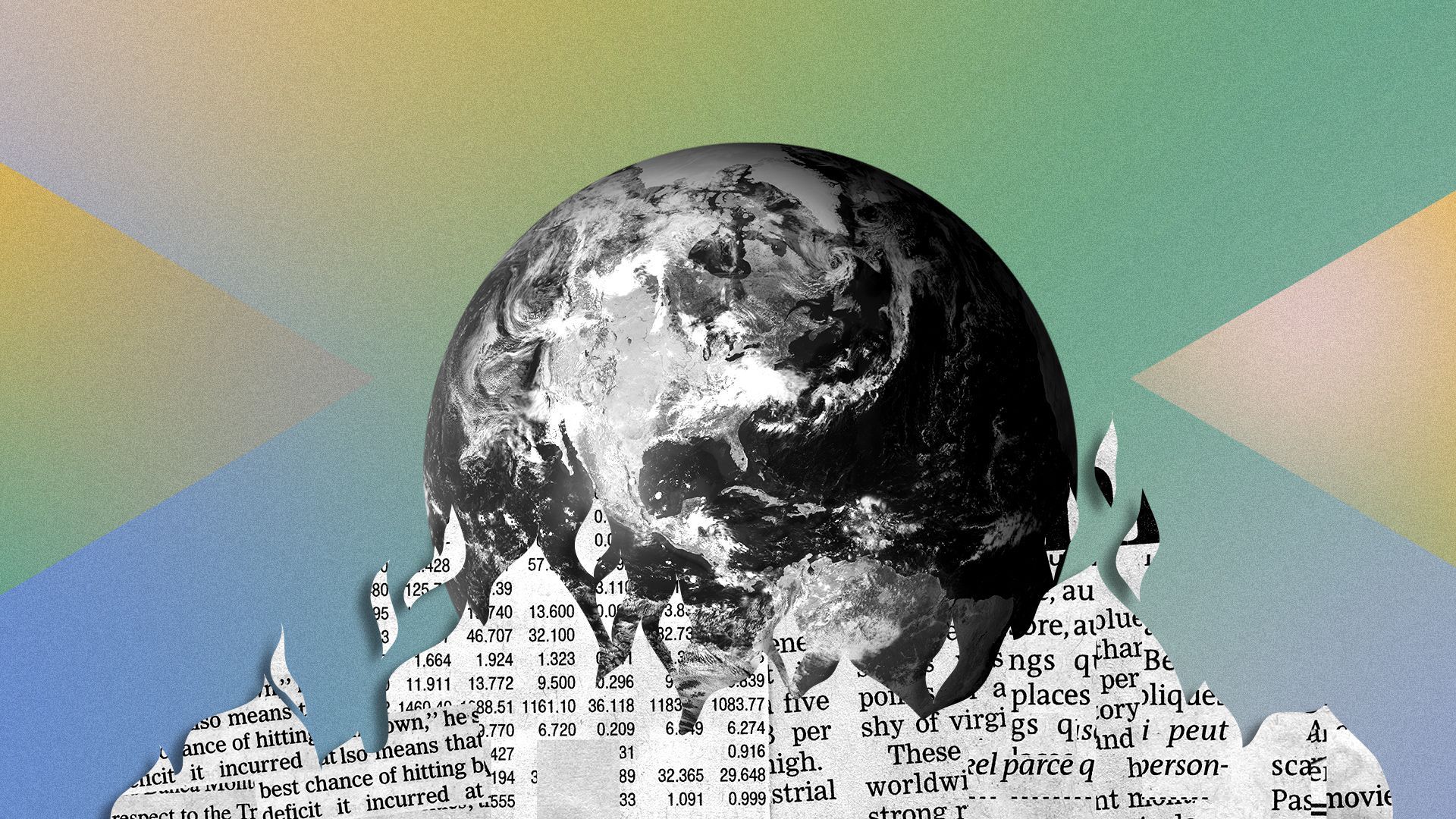| | | | | | | Presented By Chevron | | | | Axios Generate | | By Ben Geman and Andrew Freedman ·Aug 09, 2021 | | ☕ Good morning! Ben is on a long overdue vacation this week. I've got a takeover issue for you about the new U.N. IPCC climate report. Today's Smart Brevity count is 1,459 words, 5.5 minutes. 📊 Data point of the day: $25.5 billion. Saudi Aramco's net income in the second quarter of 2021, the highest since 2018. Bloomberg has more. 🚨Situational awareness: Jonathan Swan and Zach Basu scoop the appointment of a new special envoy for energy, Amos Hochstein. 🎶 On this date in 1980, AC/DC scored their first U.K. number 1 hit with "Back in Black," which serves as today's intro tune. | | | | | | 1 big thing: Global warming's growing threats |  | | | Photo illustration: Sarah Grillo/Axios. Photos: Salvatore Allegra/Anadolu Agency, Nick Paleologos/Bloomberg and Sukhomoy Sen/NurPhoto via Getty Images | | | | Global warming is happening so fast that scientists now say we'll cross a crucial temperature threshold as early as 2030 — up to a decade sooner than previously thought — according to a sweeping new United Nations-sponsored review of climate science published Monday. Why it matters: The report, from the U.N. Intergovernmental Panel on Climate Change (IPCC), reveals a climate system on the precipice of far more serious climate impacts. - The report connects the dots between extreme events and long-term human causes.
- Weather and climate events are becoming more common and severe, it says, and rising sea levels are flooding coastal areas with regularity.
Quick take: The new IPCC assessment, its sixth since its creation in 1988, shows that warming is transforming the globe into a far riskier place to live. It includes stark new details on present-day impacts detected on every populated part of the globe. - Glaciers and ice caps are losing mass worldwide.
- Atmospheric CO2 concentrations were higher in 2019 than at any time in at least 2 million years, and the past 50 years of warming were the fastest temperature increases in at least 2,000 years.
- And all this is happening at just 1.1°C (2°F) of warming relative to 1850-1900. The world is currently on course for at least 3°C (5.4°F) of warming by 2100 if all of the voluntary Paris Agreement emissions pledges are fulfilled.
Context: The report, conducted by 234 authors around the world and based on 14,000 peer-reviewed studies, arrives at a hinge point in the global fight against climate change. - Leaders in the U.S. and European Union are seeking to enact strict new measures to cut greenhouse gas emissions and keep the 1.5-degree goal alive, with a pivotal summit slated for November in Glasgow.
- However, consensus on emissions cuts even among the wealthiest nations remains elusive.
Flashback: When viewed in comparison to its first report in 1990, the IPCC's new climate assessment reflects the transition of global warming from a far-off future issue to a present-day crisis. By the numbers: The report projects that global warming at the end of the century will range between about 1.3°C to 5.7°C (2.34°F to 10.26°F), relative to 1850-1900 levels, depending on emissions. - The "best estimate" range of warming by 2100 spans from 1.4°C to 4.4.°C (2.5°F to 7.9°F).
- Sea levels are projected to increase by between at least a foot and a half to more than three and a half feet by the end of the century, though a rise of 7 feet by 2100 "cannot be ruled out."
Read a two-page summary. |     | | | | | | 2. The 1.5-degree threshold advances by 10 years |  Data: IPCC; Chart: Will Chase/Axios Two reasons the world is likely to cross the threshold of 1.5°C (2.7°F) of warming relative to preindustrial levels faster than previously estimated is because of an improved understanding of historical warming, as well as increased recent warming rates, IPCC contributing author Zeke Hausfather told Axios. Details: Every emissions pathway the IPCC considered, even the one with the lowest greenhouse gas emissions, would see the 1.5-degree target be eclipsed for a period, before dropping slightly by 2100. - Hausfather said the earlier occurrence of the 1.5-degree crossing is "a real change in awareness even if the science is nuanced around this."
- He views the 2°C (3.6°F) Paris target as more feasible at this point. "We still have a long ways to get to 2 degrees," he said.
The bottom line: The report shows that the world can emit only approximately 400 billion metric tons of CO2 — or between 10 to 11 years of current (2020) emissions — starting after Jan. 1, 2021, before it is fully committed to 1.5°C of warming through 2100. |     | | | | | | 3. Human-caused warming is supercharging extremes |  | | | Photo illustration: Sarah Grillo/Axios. Photo: Johan Ordonez/AFP via Getty Images | | | | The new report goes much further in declaring clear ties between human-caused global warming and extreme weather and climate events, particularly heat and precipitation extremes. Evidence is piling up, too, that warming is tied to an uptick in the proportion of stronger tropical cyclones. Driving the news: This is an area where the report lines up eerily well with current events. Details: The report warns of the potential occurrence of "compound events," in which various extremes, such as heat waves and drought events, occur simultaneously. - More straightforward extremes are rapidly escalating, too. For example, according to IPCC lead author Kim Cobb, heavy single-day precipitation events that used to occur once per decade are now occurring 1.3 times as often — a 30% increase.
- If warming hits 2°C, such events will occur 70% more frequently, she told reporters Sunday. "It's important to note that the most extreme precipitation events will get worse, faster," Cobb said.
How it works: "All of these things are connected to the fact that, as we're moving out of a stable climate. We are putting ourselves closer to these risky elements," IPCC coordinating lead author Alex Ruane told Axios. What they're saying: "We're running the experiment on us. WE'RE INSIDE THE BEAKER," climate researcher Andrew Dessler, who is unaffiliated with the new report, told Axios via email. |     | | | | | | A message from Chevron | | Chevron believes the future of energy is lower carbon | | |  | | | | At Chevron, we've already exceeded our 2023 upstream carbon intensity reduction targets, which were set on a time frame in line with the Paris Agreement stocktake. We're on track to achieve a 35% carbon intensity reduction by 2028 vs. 2016. Learn more. | | | | | | Bonus: Human tie to global warming is "unequivocal" |  | | | Photo illustration: Sarah Grillo/Axios. Photo: Idrees Abbas/SOPA Images/LightRocket via Getty Images | | | | The report also strengthens the wording that ties global warming to human emissions of greenhouse gases, calling it "unequivocal." What they're saying: Ko Barrett, IPCC vice chair, told reporters Sunday this is the "strongest statement the IPCC has ever made" regarding the main cause of modern climate change. Flashback: The previous IPCC assessment report, published in 2013, was more nuanced, stating: "It is extremely likely that human influence has been the dominant cause of the observed warming since the mid-20th century." |     | | | | | | 4. Every 10th of a degree of warming matters |  | | | Illustration: Aïda Amer/Axios | | | | Jane Lubchenco, an accomplished marine scientist, is now the top climate and energy official at the White House Office of Science and Technology Policy. She told Axios in an interview that the "overarching theme" of the report is "urgency." The big picture: "You know, it's a scientific report, it presents the facts, but there's just an underlying sense of urgency that is palpable," she said. - She sees the 1.5-degree target as viable but said the window for accomplishing that goal is closing rapidly. "Today's report shows that there's an increasingly narrow pathway to limit warming to 1.5 degrees, which is why we need immediate, decisive, collective global action," she said.
Of note: According to the IPCC report, changes to parts of the climate system that operate on long timescales, such as the oceans and ice sheets, are "irreversible for centuries to millennia." - However, that does not mean that all hope is lost, Lubchenco cautioned.
- "Some of these changes can be slowed, and others could be stopped or [eventually] reversed by limiting warming," she said.
|     | | | | | | 5. Greater focus on methane emissions |  | | | Illustration: Aïda Amer/Axios | | | | For the first time, the IPCC report has a chapter devoted to emissions of methane, black carbon and other "short-lived air pollutants." Why it matters: The report notes that making cuts to methane, which is a powerful greenhouse gas that lasts in the air for only about a decade, compared to the 1,000-year life span of a molecule of CO2, could pay dividends by cutting near-term warming. - This could raise the pressure on the oil and gas industry as well as the agricultural sector, which are major emitters of the gas, to crack down.
- "We need to reduce emissions of the climate pollutants that can slow down the rate of warming, and methane is really your best opportunity to do that," said Ilissa Ocko, a climate scientist at the Environmental Defense Fund, told Axios.
- She cited methane's outsized warming contribution compared to other short-lived forcers, and the availability of affordable reduction strategies.
|     | | | | | | 6. Scientific advances narrow projections |  | | | Photo Illustration: Shoshana Gordon/Axios. Photo: STR/AFP via Getty Images | | | | New climate science insights enabled researchers to narrow the projected range of warming that would occur for a doubling of carbon dioxide in the atmosphere, which is known as the "equilibrium climate sensitivity" (ECS). The intrigue: Some of the newer computer models used for the new report show higher-end climate sensitivity results, and therefore, much more warming. How it works: However, armed with better knowledge of historical climate change, and guided by additional tools, scientists narrowed the "very likely" range to between 2°C and 5°C (3.6°F to 9°F). The likely range is now between 2.5°C and 4°C (4.5°F to 7.2°F). - This compares to the previous report's range of 1°C to 6°C (1.8°F to 10.8°F), with a "likely" range of 1.5°C to 4.5°C.
- The new very likely range has at least 90% confidence.
- This means we're less likely to get by with low levels of warming by adding more CO2 to the air, but also that higher-end scenarios falling outside the range are more remote possibilities.
|     | | | | | | A message from Chevron | | Chevron believes the future of energy is lower carbon | | |  | | | | At Chevron, we've already exceeded our 2023 upstream carbon intensity reduction targets, which were set on a time frame in line with the Paris Agreement stocktake. We're on track to achieve a 35% carbon intensity reduction by 2028 vs. 2016. Learn more. | | | | Thanks for reading! A special thanks to Margaret Talev, Sam Baker and the Axios Visuals team for shaping today's takeover issue. Please tell your friends who may be interested in this newsletter that they can sign up here. |  | | It'll help you deliver employee communications more effectively. | | | | | | Axios thanks our partners for supporting our newsletters. If you're interested in advertising, learn more here.
Sponsorship has no influence on editorial content. Axios, 3100 Clarendon Blvd, Suite 1300, Arlington VA 22201 | | | You received this email because you signed up for newsletters from Axios.
Change your preferences or unsubscribe here. | | | Was this email forwarded to you?
Sign up now to get Axios in your inbox. | | | | Follow Axios on social media:    | | | | | |











No comments:
Post a Comment